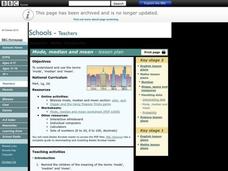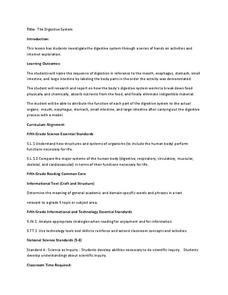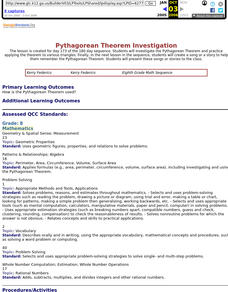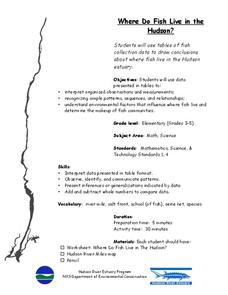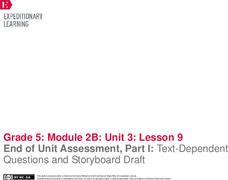Curated OER
Sound
First graders investigate sound and recognize the importance of hearing. They listen to and identify sounds in the environment, classroom, and on a pre-recorded tape. The students classify each type of sound and participate in a Sound...
Curated OER
The Secret School
Fourth graders make predictions and go over vocabulary for the story The Secret School. In this reading lesson plan, 4th graders use comprehension skills as they read the story and have to read to them.
Curated OER
Language Tutorial
Fourth graders practice using vowel teams and pronunciations. In this language lesson, 4th graders complete visual, auditory, and phonemic drills, review spellings of words, and echo dictated words. Students also read chorally and...
Curated OER
Rosa Parks Dies
Young scholars read a story called Civil Rights Leader Rosa Parks Diesand answer vocabulary and comprehension questions about it. In this current events Rosa Parks lesson plan, students respond to literature by answering questions,...
Curated OER
Tiki, Tiki Rainforest
Learners explore fascinating world of rainforest, and participate in activities such as adopt-an-acre-of-the- rainforest, adopt-a-rainforest-animal, sequencing, comparing and contrasting, word processing and searching the Internet.
Curated OER
Veterans Day
Fourth graders research the origin of Veterans Day and its purpose in the life of Americans today. Students begin the lesson by looking up key vocabulary. The teacher uses a media presentation to create interest. The class composes...
Curated OER
Mode, Median, and Mean
Students define mode, median and mean, and perform mathematical operations to determine these 3 terms. In this statistics/math instructional activity, students practice memory strategies to help distinguish between mode, median, and...
Curated OER
Limu and ME!
Students explore limu. In this cross curiculum botany and art project, students view a limu-picking film and then collect several species of limu. Students follow a sequence of instructions using limu, card stock and wax paper to create...
Curated OER
The Progressive Era: Muckrakers Grade 8
As you explore an excerpt from Upton Sinclair's The Jungle with your class, discuss how his descriptions of the meat-packing industry caught the public's attention and helped to promote change in the Progressive Era.
Curated OER
The Digestive System
Discover how the human body's digestive system works with a brain and stomach friendly activity. Scholars taste test a variety of foods to find out how they behave once in the mouth. Class members then play a game called Move That...
Curated OER
Glad To Meet You
Students explore patterns. In this patterns instructional activity, students explore patterns in hand-shaking scenarios. Students work in groups to predict and record the number of handshakes that occur in a group.
Curated OER
This Place is Just Like the Other
Students write paragraphs that compare and contrast the geographical characteristics of Arizona and the Southwest region. In this geographical characteristics lesson plan, students complete a diagram and discuss how Arizona differs from...
Curated OER
Feeling Alone
Second graders listen to the story, The Whispering Cloth and discuss the message of the story. In this feeling alone lesson plan, 2nd graders make connections about what feeling alone means to them. Students define and interpret...
Curated OER
Tribal Restoration & Reorganization
Young scholars list the main events in historical sequence of tribal restoration and reorganization. They identify a present-day American Indian experience or phenomenon as a result of Tribal Restoration and Reorganization laws and...
Curated OER
Tribal Termination & Urbanization
Students list the main events in historical sequence of tribal termination and urbanization. They identify a present-day American Indian experience or phenomenon as a result of termination and urbanization and refer to 'Navajo...
Curated OER
Pythagorean Theorem Investigation
Eighth graders investigate the Pythagorean Theorem and practice applying the theorem to various triangles. Finally, in the next lesson in the sequence, 8th graders create a song or a story to help them remember the Pythagorean Theorem.
Curated OER
All Ears
Students close their eyes and listen for one minute to whatever sounds occur. They write what they heard on slips of paper. They select some of these and write them down in a sequence that seems right to them.
Curated OER
Spinning Short Vowel Game
First graders, in pairs, use spinners to experiment with different combinations of letters. They combine letters and determine whether they have produced a word or not. They construct and record words choosing letters from designated tiles.
Curated OER
Courage
Students become familiar with dance vocabulary and, with their bodies, create shapes and transitional movements to depict emotions related to the theme of 'courage.' They coordinate their movements to music and critique each others'...
Curated OER
Anasazi Basket Weaving: 0-500 A.D.
Sixth graders study Period 1- Basket Maker 0-500 A.D. of Anasazi Culture. They identify the sequence of history in Anasazi Culture and Indians of the Mesa Verde. They discover American Indian contributions to the world and develop...
Curated OER
Anasazi Pueblo Period: 700-1050 A.D.
Sixth graders study Period 3-Developmental Pueblo 700-1050 A.D., of Anasazi culture. They identify the sequence of history in Colorado and recognize American Indian Contributions to the world. They study Indians of the Mesa Verde and...
Curated OER
Clapping Syllables
Learners explain that words are made up of parts called syllables. They associate spoken language with written words
Curated OER
Where Do Fish Live in the Hudson?
Students explore the environmental factors that influence where fish live and determine the makeup of fish communities in the Hudson. They interpret guided observations and measurements to assess patterns, sequences and relationships.
EngageNY
End of Unit Assessment, Part 1: Text-Dependent Questions and Storyboard Draft: “You Can Do a Graphic Novel” Excerpt
Eyes on the finish line. Serving as the first part of the end of unit assessment, learners answer questions based on a text about how to write a graphic novel. Using what they've learned, they then create a storyboard about the invention...






